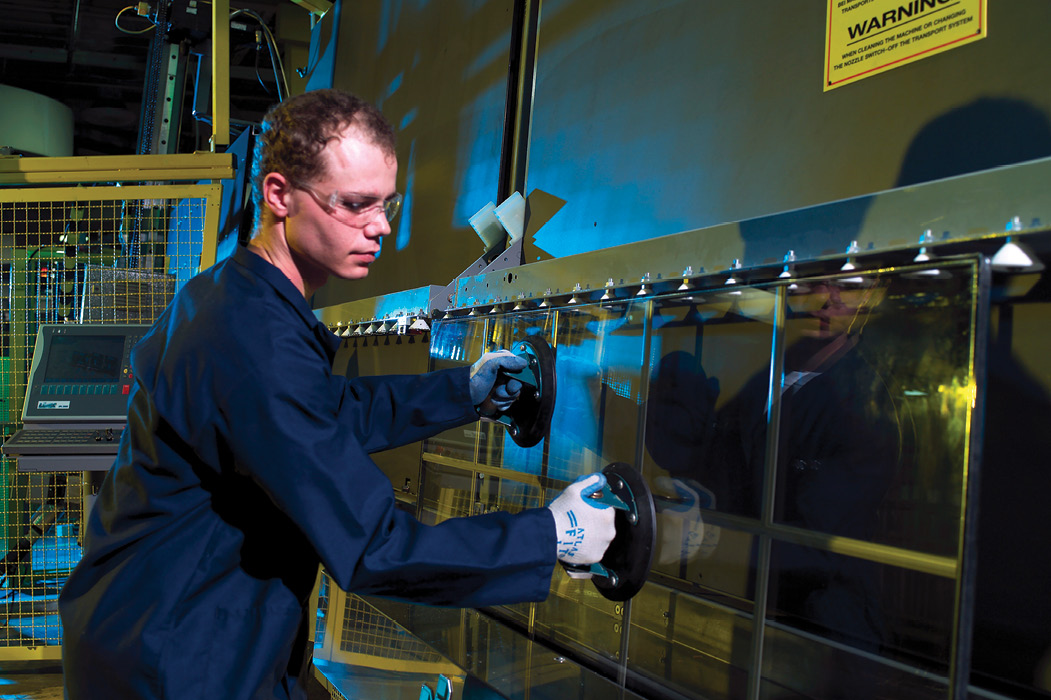
Emerging technologies such as automated equipment can make for greater manufacturing efficiencies and long-term cost savings, among other benefits.
A variety of new technologies have proliferated in the broader building and construction space in recent years. Commercial glass and glazing professionals must be continuously adapting, utilizing these technologies to meet evolving demands. Depending on a company’s role in the industry, doing so might require reengineering glass packages, swapping in new higher-performance component parts, or learning new glazing and installation techniques.
All of that might sound disruptive or even risky. But “business as usual” doesn’t cut it these days.
There are a few reasons why commercial glass and glazing professionals should be actively investigating new technology to drive their businesses forward:
1. Codes keep changing
National Glass Association Code Consultant Tom Culp wrote a great piece earlier in the year outlining challenges and opportunities for commercial glass professionals when it comes to the battle for the wall. As of this writing, we’re winning that battle—and it’s because our industry has worked successfully with code committees to develop attainable performance goals in large-format glazing and curtain wall applications.
But codes don’t get less stringent, only more so. The next generation of high-performance glass and glazing will require the continued adoption of low-emissivity coatings, warm-edge spacers and other technology that help deliver outstanding thermal performance required to meet codes. If companies haven’t already, it’s time to fully embrace these technologies and their impact on performance.
2. The labor shortage continues
Technology can help companies manage the ongoing labor shortage for companies in all segments. On the plant floor, high-speed automation can save labor in the manufacturing process. Commercial builders and glaziers looking to alleviate labor concerns on the jobsite should be investigating how new tech can help, too. Some experts expect that robotics, laser scanning, 3D printing and more will be common in commercial construction within the next decade. For glaziers wanting to stay at the cutting edge, it’s never too early to investigate how these types of solutions can help.
3. Attitudes are evolving
The adoption of new technology requires organizations to be open-minded. Recently, attitudes have been changing toward new innovations in the commercial space.
For example, some commercial builders are exploring alternative materials for structural framing. Cross-laminated timber is one of those emerging materials, which has a smaller environmental impact than steel or concrete and can provide some thermal efficiency benefits. Elsewhere, there’s been good opportunity for vinyl and composites in punched opening commercial window applications. It wasn’t long ago that vinyl would have been unthinkable here, but the material has proven itself in terms of structural performance. The industry will see more open-mindedness across the entirety of the commercial construction space as buildings of the future seek to become more efficient in every aspect.


